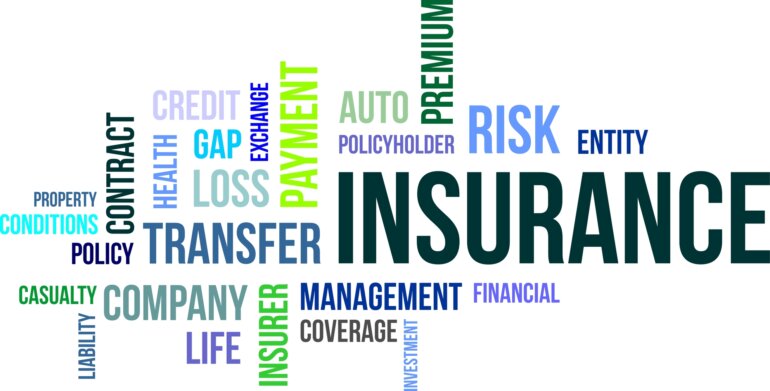All insurance is not the same: Why all insurance policies are not created equal
Being afforded the agency to protect ourselves, our families, our homes, and our belongings from any negative unforeseen circumstances is the best way to ensure peace of mind for any human. While that’s true, the road to getting there is easier said than done when considering the myriad choices around insurance cover that we have today. Deciding which policy to choose can be a confusing and complex affair.
Historically, one of the only ways to make this decision has been to compare prices and choose the most affordable cover without much consideration for the quality of cover. Consumers had little to no insight into the many intricacies of insurance policies, as acquiring coverage was either done via a call centre, a direct insurer, an insurance agent who only offered one product or it was left to third parties such as an insurance broker to make this choice on your behalf.
Even today, many insurance companies often advertise to consumers, promising to match or beat the premiums you pay if you switch over to them, again, with no reference to scope of cover or any restrictions on their policy. This is almost as absurd as offering to match the price of a car you’re buying without asking what car it is.
Although cost savings are important, it’s not really the best determinant in acquiring the best insurance cover because – simply put – not all insurance products are created equal. For example, an insurer might be offering motor vehicle or household insurance that looks similar to others in the market at a lower price, but on closer inspection, the lower priced product might have restrictions such as “you’re not allowed to use the vehicle to drive to work/meetings”, or have cover exclusions such as “hail damage is not covered”, or warranties such as “your watches worth more the R5000 must be kept in a locked safe at all times when not being worn”. These are obviously material to know and may not be the case on your higher priced product which may also come with a lower excess and a better claim processing experience.
So, today, with so much more information at the consumer’s fingertips and direct online access to click-to-buy digital insurance marketplaces, it’s important for consumers to take the time, shop around, and compare insurance options beyond just premiums. Here are four factors to look out for before making a purchasing decision on any insurance coverage, from personal car, household and medical insurance, to business insurance or life, personal accident and disability cover:
1. What is the basis of cover – All Risks vs Defined Perils:
Insurance policies or sections of a policy provide cover on either a “defined perils basis” or on an “all risks basis” and both these policy types operate fundamentally differently.
With a Defined Perils policy you are explicitly told what you are covered against, for example “fire, storm, explosion, theft, etc.” and when you have a claim you need to show that the cause was one of these pre-defined perils.
Whereas the All Risks policy turns this on its head and covers you against everything that could go wrong except specifically what it says is not covered, so when you have a claim, the insurer will pay unless they are able to show that the cause of the loss was one of the specifically excluded perils.
The All Risks policies are often broader in coverage and easier to deal with at claim stage but may come at a higher cost.
2. Pay attention to Exclusions
It can be easy to get wrapped up in the relief of knowing all the things you will be covered for when choosing an insurance policy but what can often go unnoticed (with detrimental effects in the future) is what is not covered.
All insurance products include exclusions in their contracts, for example, policies universally exclude losses caused by war, nuclear contamination, and recently in South Africa, electricity grid failure. In addition to these universal exclusions there are many “discretionary” exclusions that vary from insurer to insurer and even from one product to another with the same insurer.
Although it’s not possible or necessary for your insurance policy to cover every single eventuality – you personally might not need your home insurance to cover damage caused by pets or don’t need a hired car when you have an accident- it’s best to be aware of what is and isn’t included or excluded in your cover so that you’re not surprised by it later.
Thousands of businesses thought they were covered against the revenue losses arising from the business interruptions due to the Covid lockdown only to find that this was considered an exclusion on most policies. For many of them insurers enforced the exclusion and this was the difference between surviving the crisis or shutting their doors.
Trying to navigate the fine print can be daunting. Fortunately resources like comparative sites facilitate this for you with clear tables showing what is and isn’t covered.
3. Not all insurers are equal
All insurers registered to operate in SA are regulated and supervised by the Financial Sector Conduct Authority (FSCA) which should give one a lot of comfort when buying a policy but beyond meeting the minimum regulatory requirements there are critical nuances that distinguish one insurer from another.
Most important is an insurer’s ability to pay claims which is largely determined by the adequacy of their capital reserves, how liquid or available this capital is and by how much it exceeds the insurer’s claims and other financial liabilities. This is a complex calculation that changes from month to month, making it challenging for the average consumer to easily determine this. But it’s important to know that this ranges from a ratio of 1 (meaning the insurer has the absolute minimum capital available to pay claims) and say 2,5 (the insurer has a very significant buffer of more than double what they require to pay claims). In the latter case your cover is “safe” even if the insurer got their calculations wrong or they experience a catastrophe resulting in a deluge of unexpected claims – not so with the former insurer.
The ability (having enough cash) to pay claims is one thing but the desire and likelihood of paying a claim is quite different. This is a subjective and difficult to quantify issue but, in our experience, we come across two distinct attitudes in insurers – those who look for ways to pay your claim even when it is a marginal call and those who look for reasons not to pay even when it is a cut and dried case – and it all comes down to the values and ethics of the insurer.
Fortunately the FSCA, independent ratings agencies and even digital marketplaces like Everything.Insure have developed a proprietary rating scheme that takes available data and objectively measures an insurer and awards it a star rating that makes comparing insurers quite simple for ordinary consumers.
4. Enhanced customer experience
The customer experience bar in most industries has been raised significantly with self-service apps and interactive interfaces on websites that intuitively guide you through your online journey, many with “mind-reading” predictive capability. Unlike its more glamorous sister industry, banking, the insurance industry is very late to this game and remains largely paper- and person-based with only very recent and sporadic forays into Insurtech and digital self-service.
With the Covid lockdown pushing us to finally take the online shopping plunge many have found the experience pleasant and almost a mandatory requirement when dealing with a vendor; so much so, that we find it archaic and frustrating when we can’t just go online and do it ourselves. If this is you then be sure that your insurance provider is one that has made the transition (and the investment) in digitising their business and is able to give you that “anything-anytime-anywhere” experience or else you will be disappointed.
And when you are making this choice be sure that it is a true end-to-end digital experience and not a pseudo one where prices are indicative and you have to go offline to a call centre to complete the transaction. Make sure it’s a true digital marketplace and not just a digital brochure dressed up like a marketplace. Also ensure that it’s not just the sale that’s online but all the attendant onboarding processes (underwriting) as well as the rest of the life cycle (claims, amendments, pausing, cancelling, etc).
The international poster-child for this sort of digital-native, digital-first, digital-fully insurance business is Lemonade Insurance that launched to much fanfare in New York in 2020. Locally, good exponents of this would be Naked Insurance and Pineapple which offer you their own product in a fully digital lifecycle and Everything.Insure which offers you a digital marketplace with many insurers’ products and a fully digital experience too.
Finally, the problem with digital-only is that it can be frustrating when you just want to talk to someone, so be sure that your provider of choice provides the careful balance of digital services when you want them and also offers the human touch where needed.
Choosing an insurance provider, policy, and coverage is a daunting task. But, armed with more information at your fingertips than ever before, and properly considering the above 4 factors means making the right decision for you and your household doesn’t need to be onerous or risky.
By Vis Govender, Co-founder of Everything.Insure and Group CEO of FirstEquity Group




